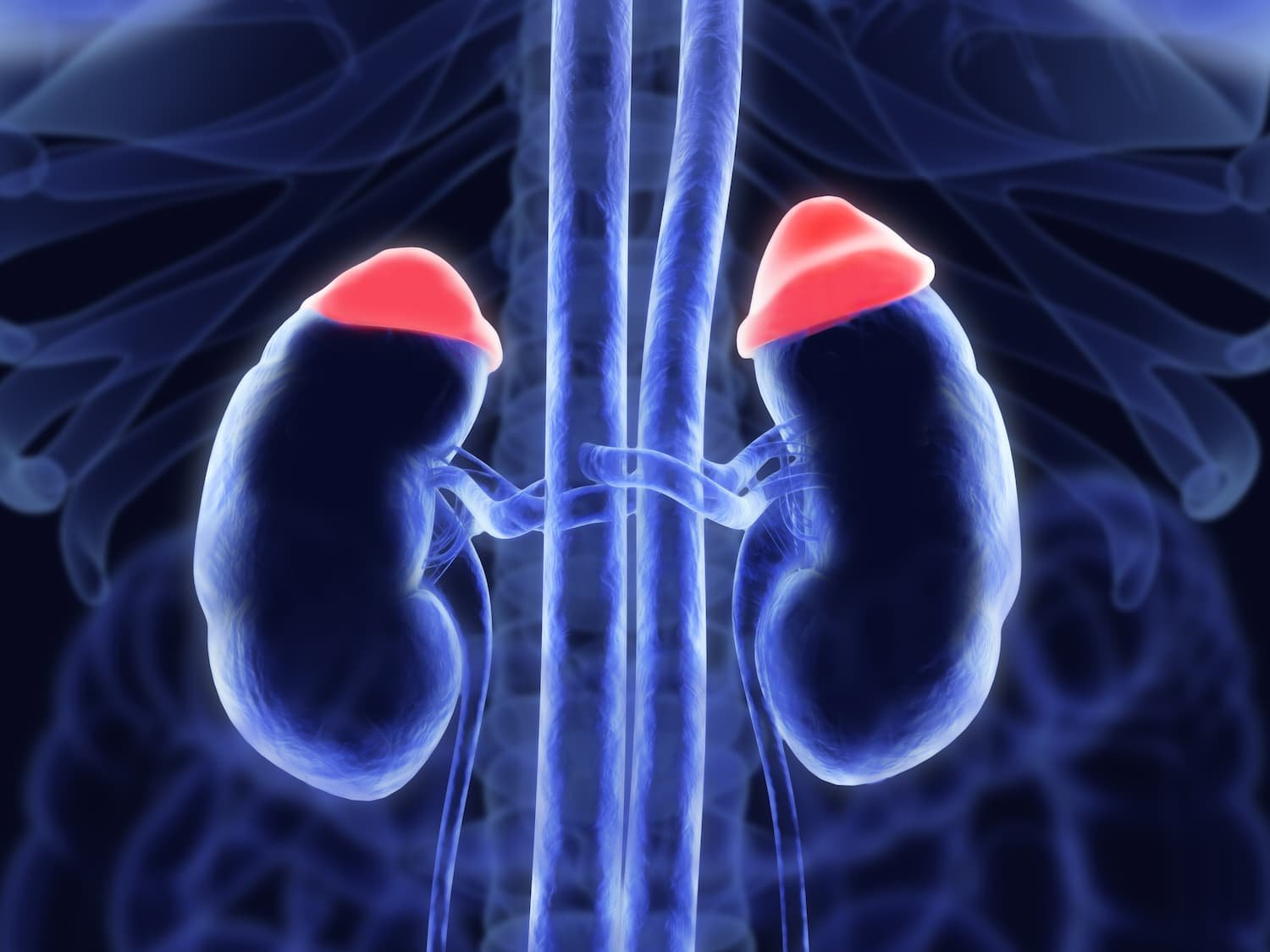The Adrenal Glands
Adrenal tumours
What are adrenal tumours?
Adrenal tumours are growths that develop on the adrenal glands - they can be either cancerous (malignant) or non-cancerous (benign). The adrenal glands are situated above the kidneys. They are comprised of two parts; the adrenal medulla and the adrenal cortex. The adrenal medulla is responsible for the production of dopamine, norepinephrine and epinephrine. The adrenal cortex secretes the hormones aldosterone and cortisol.
Most adrenal tumours are benign and do not cause symptoms. As well as being categorised as cancerous and non-cancerous, they can also be classed as functioning or nonfunctioning. The overproduction of adrenal hormones can be caused by functioning tumours.

What causes adrenal tumours?
In the majority of cases, the cause of adrenal tumours is not known. Some risk factors are understood, including hereditary conditions which have been linked to increasing the risk of getting an adrenal tumour. These hereditary conditions include; Carney complex; multiple endocrine neoplasia type 2; Li-Fraumeni syndrome; and Neurofibromatosis type 1.
There are also lifestyle and environmental conditions that may increase the risk of adrenal cancer, and many other types of cancer. These include smoking and being overweight, as well as being exposed to substances that cause cancer.
Symptoms of adrenal tumours
There are many different symptoms that may, potentially, be the result of adrenal tumours. These include; diabetes or high blood sugar levels, high blood pressure, weakness, bruising, an increase in weight, weight loss, excessive growth of hair, low potassium levels, abnormal sweating, stretch marks on the stomach, anxiety, depression, heart palpitations, osteoporosis, panic attacks, and fat deposits on the neck.
Treatment options for adrenal tumours
The potential symptoms of adrenal tumours listed above may also have many other causes, and so it is essential that tests are done in order to diagnose adrenal tumours. Blood tests, a urine test and a test of cortisol levels may be ordered. A biopsy of the tumour can determine whether the tumour is malignant or not. Imaging tests such as an MRI scan or CR scan can also be used. Other assessments that could be made include a metaiodobenzylguanidine (MIBG) scan and adrenal vein sampling.
Adrenal tumours can be removed with surgery. If a tumour is functioning, it is usually recommended that it is removed, irrespective of how small it is. If a small tumour is nonfunctioning, it can be left untreated unless it grows larger than expected. Tumours that are approaching 5cm in diameter are typically removed.
Smaller tumours that appear non-cancerous can be removed via non-invasive laparoscopic surgery, while larger tumours or those which appear cancerous can be removed via open surgery (open adrenalectomy) which involves an incision in the back. This can sometimes require the removal of the entire adrenal gland. Radiation therapy and chemotherapy may also be required for cancerous tumours.
You will generally be given general anaesthetic when undergoing surgery for adrenal tumours. Laparoscopic surgery patients are able to leave the hospital the next day, while if you've had an open adrenalectomy, the hospital stay would usually be three to five nights.
